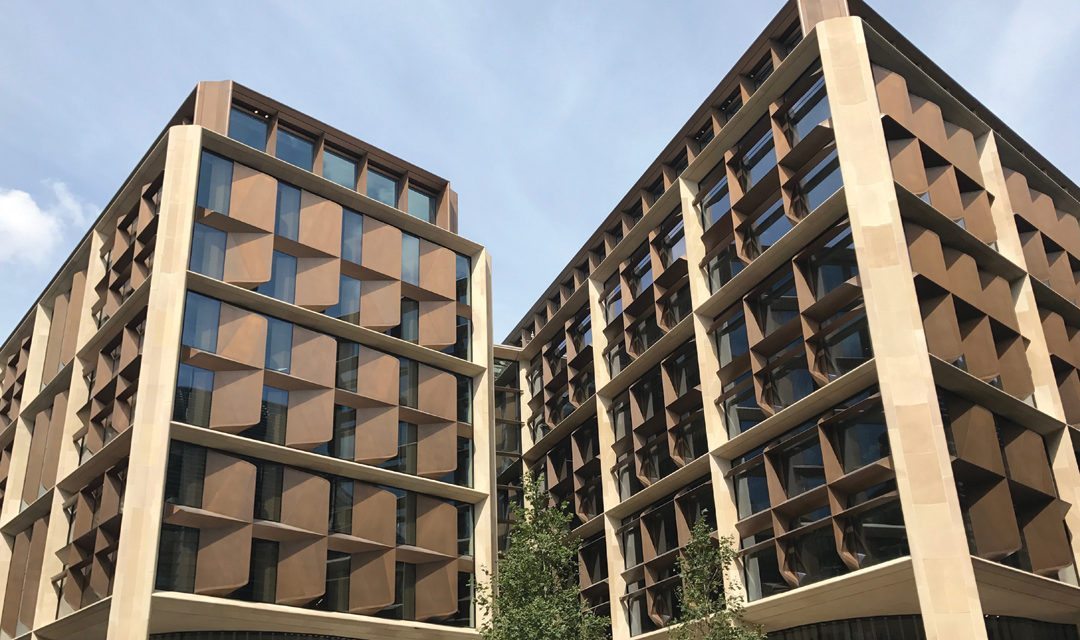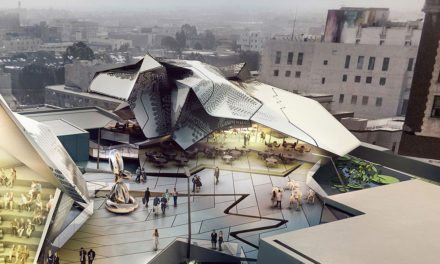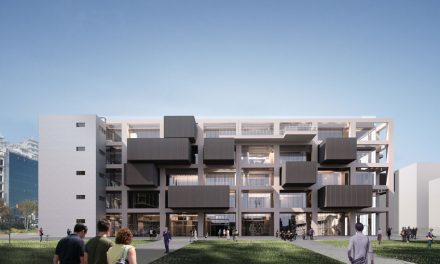Sets New Standard in Sustainable Office Design with Highest BREEAM Rating Under Latest Scheme
London — Opening later this month in the City of London, Bloomberg’s new European headquarters is the world’s most sustainable office building, as designed. The building achieved an ‘Outstanding’ rating against the BREEAM sustainability assessment method, with a 98.5% score. This is the highest design-stage score ever achieved by any major office development.[1]
Michael R. Bloomberg, founder of Bloomberg L.P. said: “We believe that environmentally-friendly practices are as good for business as they are for the planet. From day one, we set out to push the boundaries of sustainable office design – and to create a place that excites and inspires our employees. The two missions went hand-in-hand, and I hope we’ve set a new standard for what an office environment can be.”
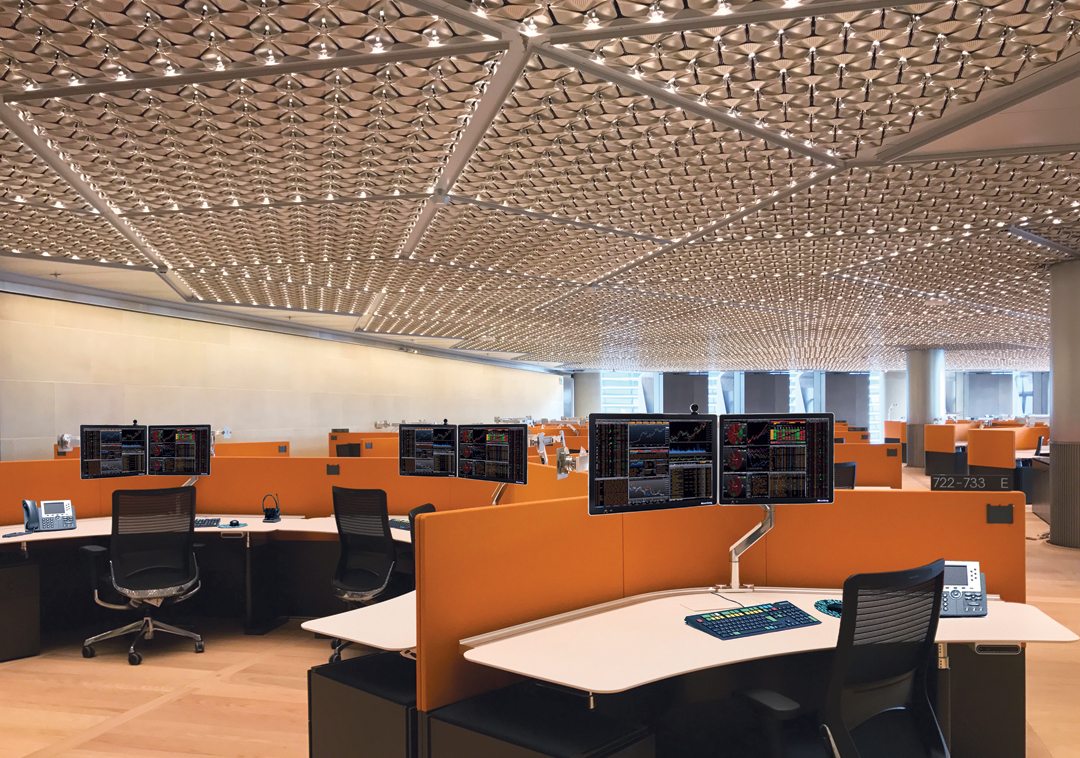
Bespoke integrated ceiling panels combine heating, cooling, lighting and accoustic functions in an innovative petal-leaf design. Credit: ‘Bloomberg’
Compared to a typical office building[2], the new Bloomberg building’s environmental strategies deliver a 73% saving in water consumption[3] and a 35% saving in energy consumption and associated CO₂ emissions[4]. Innovative power, lighting, water and ventilation systems account for the majority of energy savings. Designed to utilise waste products, respond to the building’s external environment and adapt to its occupancy patterns, many of these solutions are first-of-a-kind.
Norman Foster, Founder and Executive Chairman, Foster + Partners, said: “In some of our first discussions on the project, Mike Bloomberg and I arrived at a ‘meeting of minds’ on how the design of the new Bloomberg headquarters should incorporate the highest standards of sustainability. The project evolved from thereon into a building that is one of the most sustainable in the world. The deep plan interior spaces are naturally ventilated through a ‘breathing’ façade while a top lit atrium edged with a spiralling ramp at the heart of the building ensures a connected, healthy and creative environment.”
Alan Yates, Technical Director of BRE Global’s Sustainability Group said: “What sets the Bloomberg building apart is its relentless focus on innovation and its holistic, integrated approach to sustainable construction and design. Projects like these are really important in giving confidence to the industry to experiment.”
Innovation Highlights
• Integrated Ceiling Panels: Bespoke integrated ceiling panels combine heating, cooling, lighting and acoustic functions in an innovative petal-leaf design. The system, which incorporates 500,000 LED lights, uses 40 percent less energy than a typical fluorescent office lighting system.
• Water Conservation: Rainwater from the roof, cooling tower blow-off water, and grey water sources, like basins and showers, is captured, treated and recycled to serve vacuum flush toilets. These use net zero mains water for flushing. Overall, water conservation systems will save 25 million litres of water each year, enough to fill ten Olympic swimming pools.
• Natural Ventilation: When ambient weather conditions are temperate, the building’s distinctive bronze blades can open and close, allowing the building to operate in a “breathable” natural ventilation mode. Reducing dependency on mechanical ventilation and cooling equipment significantly reduces energy consumption.
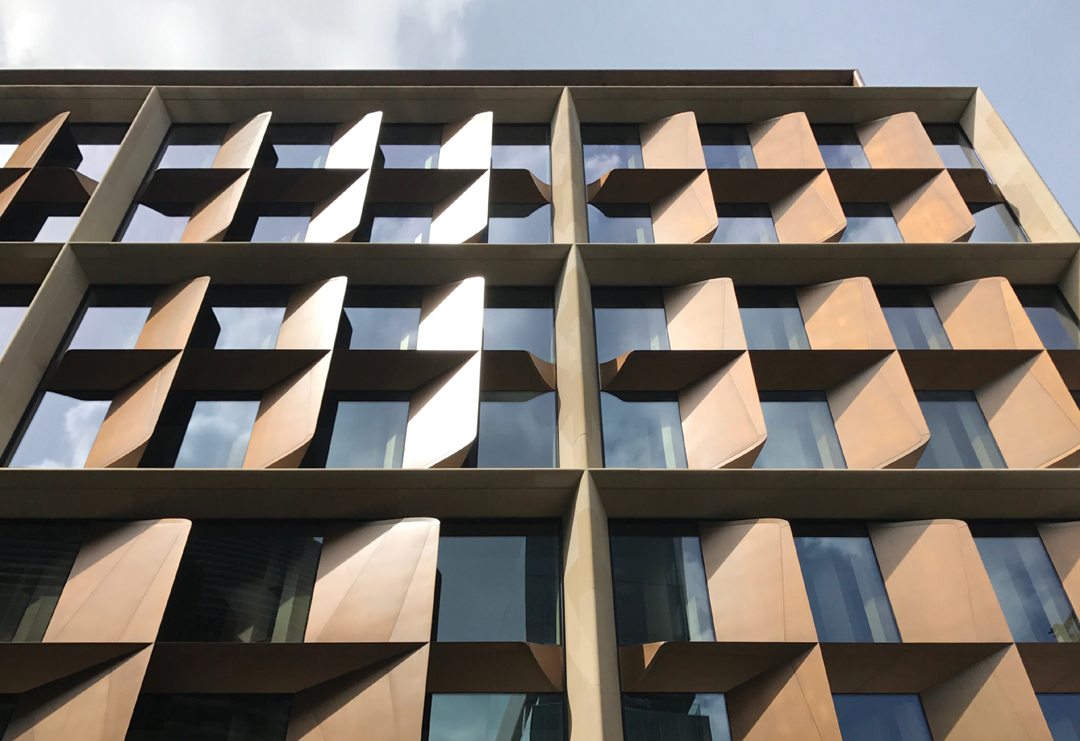
The building’s distinctive bronze blades can open and close, allowing the building to operate in “breathable” natural ventilation mode. Credit: ‘Bloomberg’
• Airflow: Smart CO2 sensing controls allow air to be distributed according to the approximate number of people occupying each zone of the building at any given time. The ability to dynamically adjust airflow in response to occupancy hours and patterns is expected to save 600-750 MWhr of power per annum, reducing CO2 emissions by approximately 300 metric tonnes each year.
• Combined Heat & Power: An on-site Combined Heat and Power (CHP) generation centre supplies heat and power in a single, efficient system with reduced carbon emissions. Waste heat generated from this process is recycled for cooling and heating and, in use, is expected to save 500-750 metric tonnes of CO2 each year.
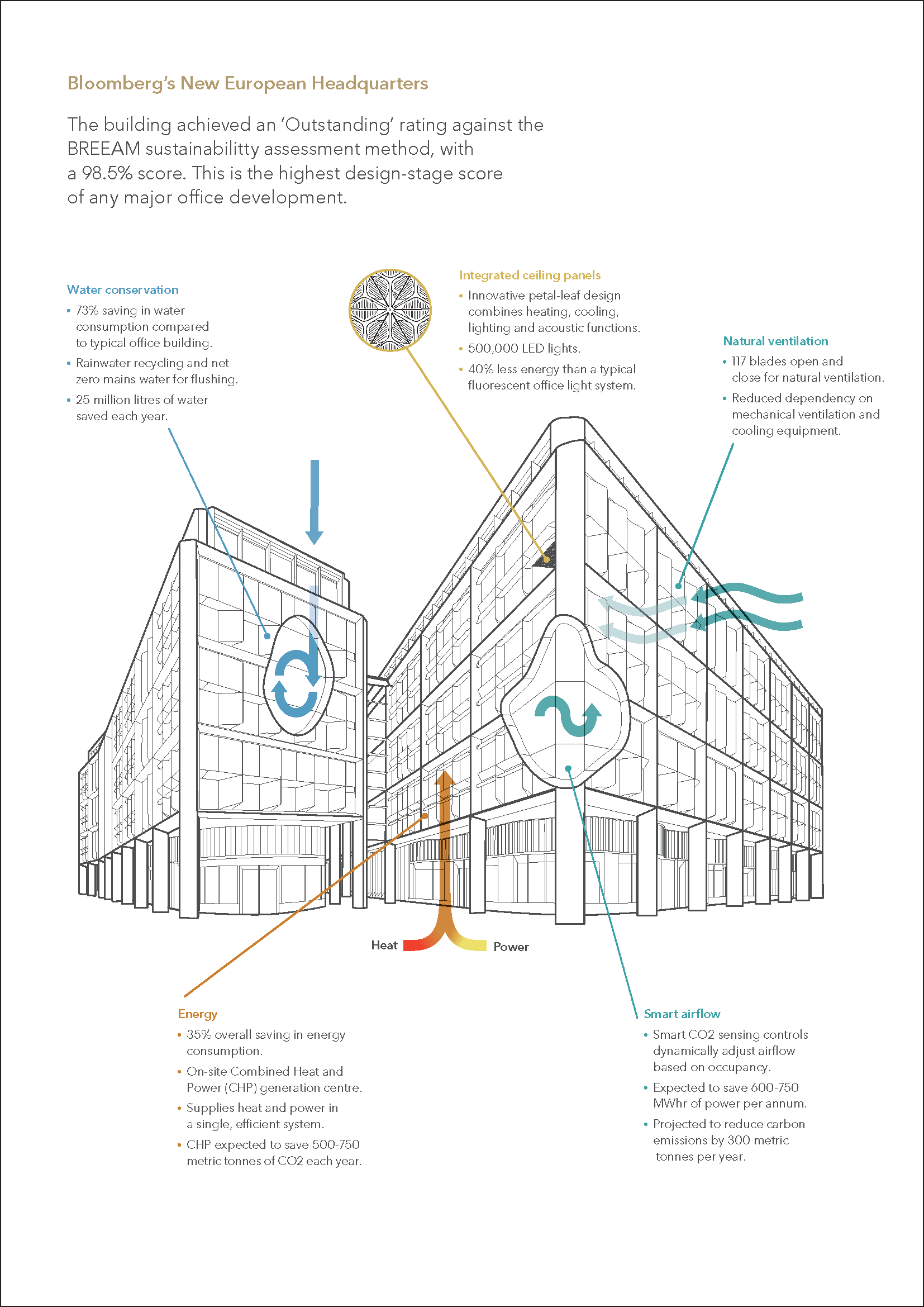
A Global Commitment
Environmental impact management has helped Bloomberg eliminate nearly 700,000 tonnes of CO₂e (41% of CO₂e intensity reduction) and avoid $95 million in operating costs since 2008.
With the addition of the new London building, Bloomberg has 34 LEED or BREEAM-certified projects globally. By the end of 2017, nearly 70% of the company’s 19,000 employees will occupy an environmentally certified office.
Sustainable Occupation
Bloomberg has been a zero-landfill operation in London since 2010; instead waste is recycled, composted or converted to energy. This commitment will continue at the new site, with better waste streaming to enable a greater proportion of waste products to be reused and recycled. Globally, Bloomberg currently diverts 75% of its total waste away from landfills and is targeting 90% diversion by 2020.
The new development’s interiors encourage active working, with sit-to-stand work stations for all employees and a central ramp spanning six floors that encourages movement through the building on foot. Two cycle centres and a wellness centre incorporating on-site health services, multi-faith prayer rooms and a mothers’ room, will also be available to all employees.
About Bloomberg’s New European Headquarters:
Located between the Bank of England and St Paul’s Cathedral, the new European headquarters occupies 3.2 acres and will provide: approximately 1.1 million square feet of office and retail space; three new public plazas, two featuring specially commissioned works of art; Bloomberg Arcade, a dining arcade lined with independent restaurants, a new entrance to Bank Underground Station and an anticipated cultural space that will restore the ancient Roman Temple of Mithras to its original site. Clad in traditional stone and bronze, the building is sympathetic to its context and will improve the surrounding public realm.
Bloomberg Arcade is now open to the public, reinstating an ancient Roman travel route and adding a new road to today’s City grid. The new building will be opened on the 24th October, 2017
For more information on Bloomberg’s approach to sustainability, visit https://www.bloomberg.com/bcause/.
About BREEAM:
BREEAM is the internationally recognised measure of sustainability for buildings and communities. More than 540,000 certificates have been issued under BREEAM on more than 24,000 projects and over 2.2 million buildings and communities are registered for certification. BREEAM is used in more than 70 countries. For more information on BREEAM visit: www.breeam.com
[1] BREEAM UK New Construction 2014: Offices (Fully Fitted)
[2] Compliant with current Building Regulations
[3] 2.34 m3/person per annum compared to 8.56 m3/person per annum from regulated loads (Source: BREEAM assessment 2014)
[4] 13.7 kg.CO2/m2 per annum compared to 20.9 kg.CO2/m2 per annum (Source: BREEAM assessment 2014).

